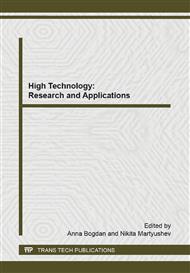p.740
p.744
p.748
p.753
p.759
p.764
p.768
p.772
p.778
Corrosion Resistance of Multilayer Ti-Ta Coatings Obtained by Electron Beam Cladding in the Atmosphere
Abstract:
A method of surface alloying of titanium substrates with tantalum in order to obtain corrosion-resistant layers is described. An electron beam injected into the atmosphere is used as a power source. A powder layer containing a composition of alloying components and a fluxing agent was placed on the surface of a Ti plate. The plate exposed to a scanning beam was moved at a speed of 1cm/sec. The scanning range was 5cm, the scanning frequency was 50 Hz and the beam power was 33.5 kW. To enhance the degree of alloying the coating procedure was repeated up to 4 times. Alloyed layers 2-3 mm thick containing up to 40 wt % Ta were obtained. The rate of corrosion in HNO3 depends on the Ta concentration in the deposited material. It is tens and hundreds times lower than the rate of corrosion of unalloyed titanium for all coatings. Surface deposition by the proposed method can be used to protect internal surfaces of chemical reactors operating in media containing aggressive acids at increased temperatures up to the boiling temperature.
Info:
Periodical:
Pages:
759-763
Citation:
Online since:
September 2014
Price:
Сopyright:
© 2014 Trans Tech Publications Ltd. All Rights Reserved
Share:
Citation:


